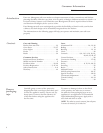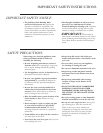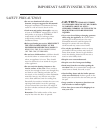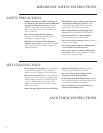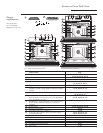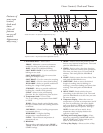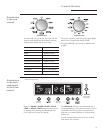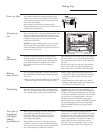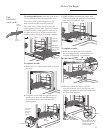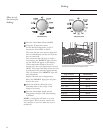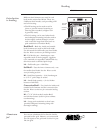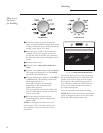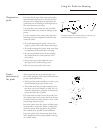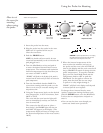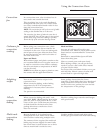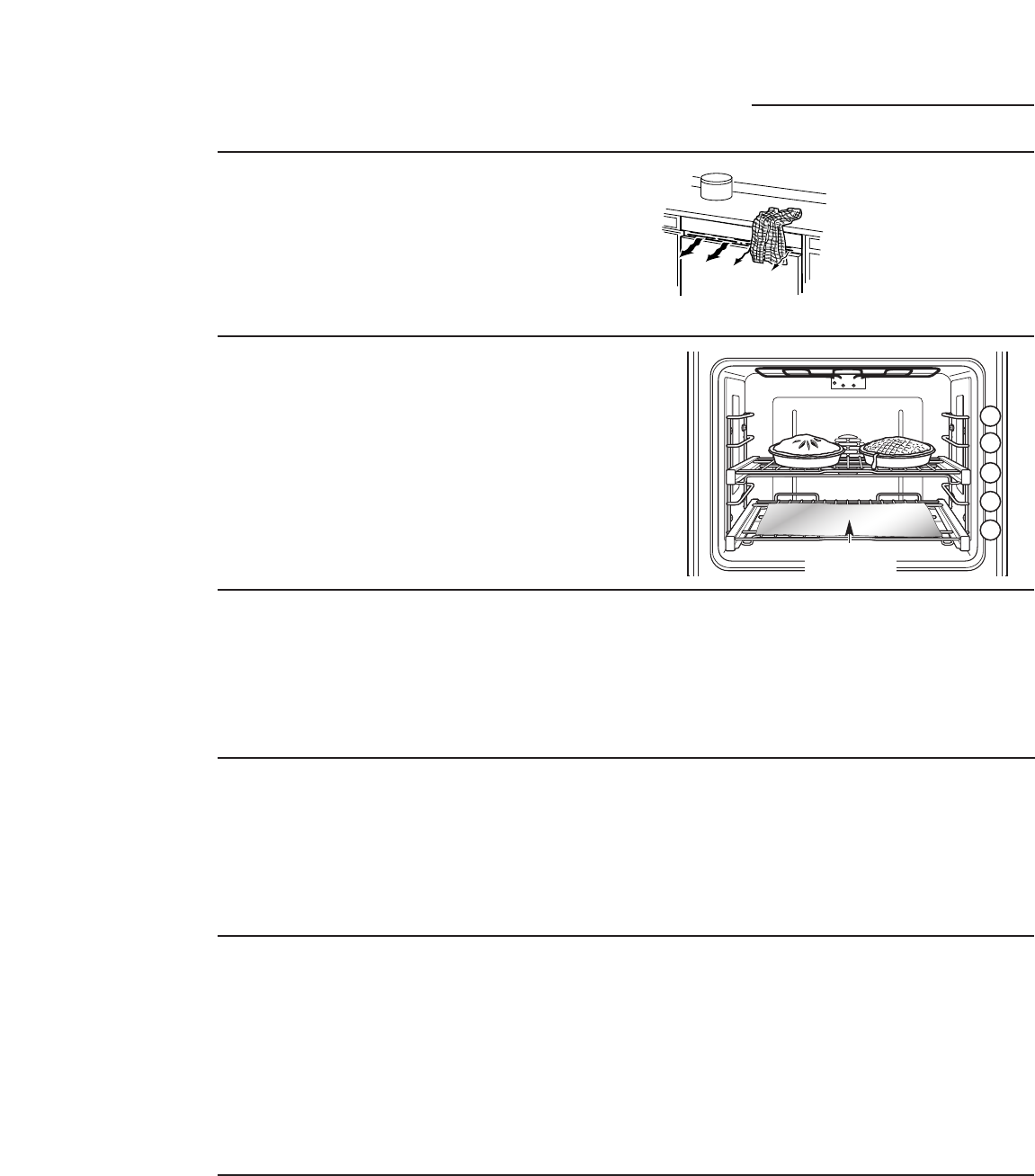
Baking Tips
Wall Oven
Pan
placement
For even cooking and proper browning, there
must be enough room for air circulation in the
oven. Baking results will be better if baking pans
are centered as much as possible rather than
being placed to the front or to the back of
the oven.
Pans should not touch each other or the walls of
the oven. Allow 1- to 1
1
⁄2″ space between pans as
well as from the back of the oven, the door and
the sides.
If you need to use two racks, use rack positions
A and C, B and D or A and D and stagger the
pans so that one is not directly above the other.
Preheating
Allow the oven to preheat before placing food in
the oven. Preheating is necessary for good results
when baking cakes, cookies, pastry and breads.
To preheat, set the oven at the correct temperature. The
PREHEAT light will turn on and 100°F will appear in
the display. (The temperature display will start to change
once the oven temperature reaches 100°F.) The convection
fan will also turn on during preheating. The control
will beep when the oven is preheated—this will take
approximately 10 to 15 minutes. The PREHEAT light will
turn off and the display will show the set temperature.
When the PREHEAT light goes off, foods should be
placed in the oven.
Aluminum
foil
Never entirely cover a rack with aluminum foil. This
will disturb the heat circulation and result in poor
baking. A smaller sheet of foil may be used to catch
a spillover by placing it on a lower rack several
inches below the food.
NOTE: For general baking, only one or two racks
will be used. Three racks will be used only when
multi-rack baking. Remove the third rack from the
oven when it is not is use.
S
E
L
F
C
L
E
A
N
5
00
4
5
0
40
0
O
F
F
O
°
W
A
R
M
35
0
3
0
0
2
5
0
2
0
0
B
R
O
I
L
B
A
K
E
P
R
O
O
F
C
O
N
V
.
B
A
K
E
C
O
N
V
.
R
O
A
S
T
C
O
N
V
.
B
R
O
I
L
Oven air flow
An internal cooling fan operates during all oven
modes. The warm air from inside the oven will be
exhausted out through vents located between the
door and control panel.
Do not allow this air flow to be obstructed by
draping kitchen towels over the front of the oven in
undercounter applications.
Baking
pans/sheets
Use the proper baking pan. The type of finish on
the pan determines the amount of browning that
will occur.
• Dark, rough or dull pans absorb heat resulting in
a browner, crisper crust. Use this type for pies.
• Shiny, bright and smooth pans reflect heat,
resulting in a lighter, more delicate browning.
Cakes and cookies require this type of pan
or sheet.
• Glass baking dishes also absorb heat. When
baking in glass baking dishes, the temperature
may need to be reduced by 25°F.
The type of
margarine
will affect
baking
performance!
Most recipes for baking have been developed
using high-fat products such as butter or
margarine (80% fat). If you decrease the fat,
the recipe may not give the same results as
with a higher-fat product.
Recipe failure can result if cakes, pies, pastries,
cookies or candies are made with low-fat spreads.
The lower the fat content of a spread product, the
more noticeable these differences become.
Federal standards require products labeled
“margarine” to contain at least 80% fat by weight.
Low-fat spreads, on the other hand, contain less
fat and more water. The high moisture content
of these spreads affect the texture and flavor of
baked goods. For best results with your old
favorite recipes, use margarine, butter or stick
spreads containing at least 70% vegetable oil.
Aluminum foil to
catch spillovers
C
D
B
A
E
10



